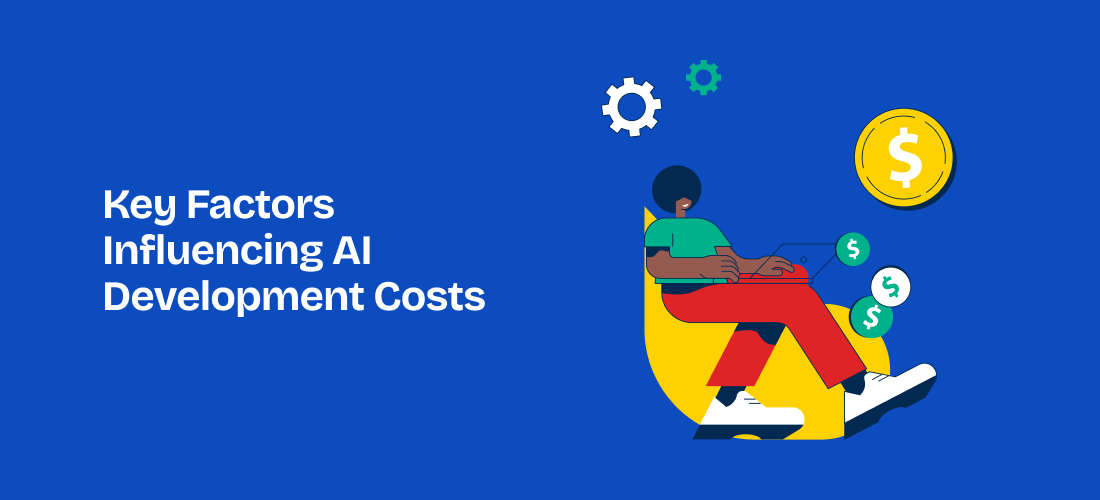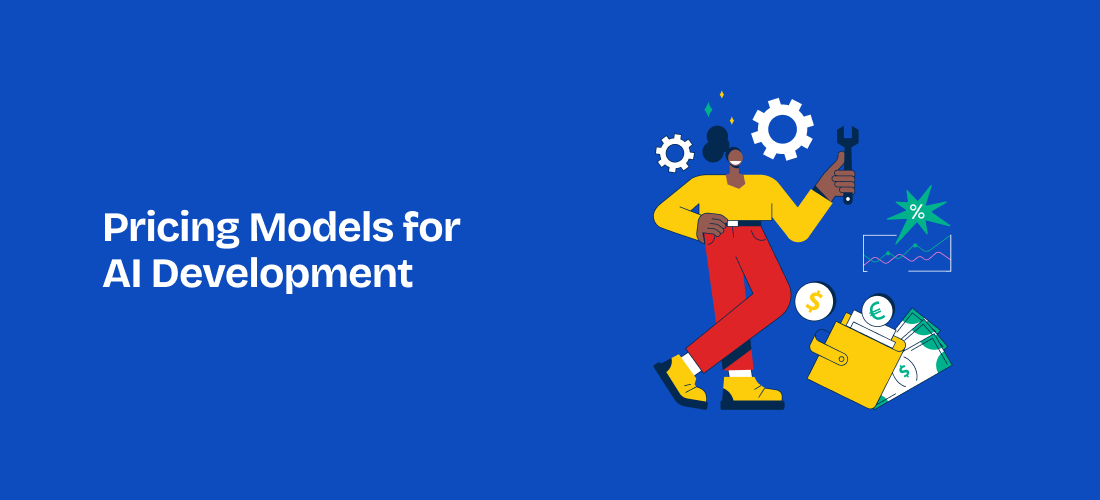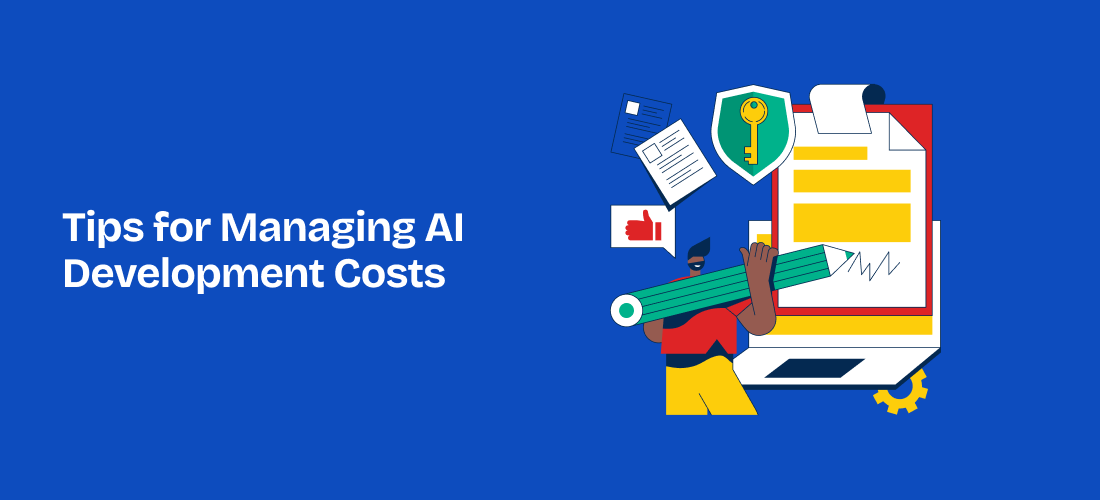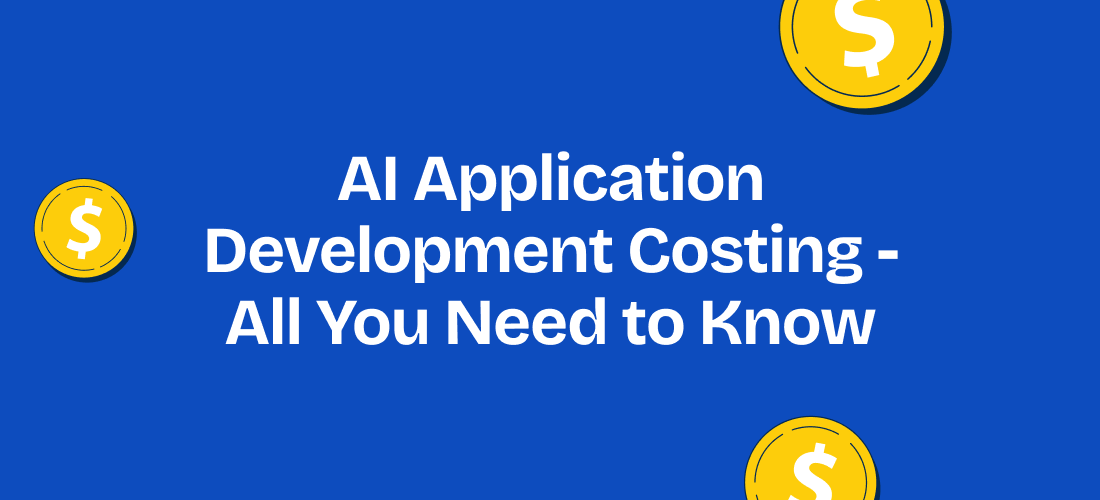Artificial Intelligence (AI) is revolutionizing industries across the globe, enabling businesses to automate processes, enhance customer experiences, and make data-driven decisions. As AI continues to evolve, more companies are looking to integrate AI technologies into their operations. However, one of the critical considerations for any business planning to embark on an AI development project is the cost. Understanding the factors that influence the cost of AI application development is essential for making informed decisions and budgeting effectively.
In this comprehensive guide, we will explore the various aspects of AI development costing, including the key factors that drive costs, different pricing models, and strategies for optimizing your AI development budget. Whether you’re a startup or an established enterprise, this blog will provide you with the insights you need to plan and execute your AI projects successfully.
Key Factors Influencing AI Development Costs

The cost of AI application development is influenced by a variety of factors, each of which can have a significant impact on the overall budget. Understanding these factors will help you better estimate the costs associated with your AI project and make informed decisions about where to allocate resources.
1. Project Complexity and Scope
One of the most significant factors that influence AI development costs is the complexity and scope of the project. The more complex the AI solution, the higher the development costs.
Key Considerations:
- Type of AI Application: Simple AI applications, such as basic chatbots or recommendation systems, typically cost less to develop than more complex solutions, such as deep learning models, natural language processing (NLP) systems, or computer vision applications.
- Number of Features: The number of features and functionalities included in the AI application will also impact the cost. More features require additional development time, testing, and integration efforts.
- Data Requirements: AI applications require large datasets for training and validation. The cost of data collection, cleaning, and labeling can vary depending on the quality and quantity of data needed.
2. Technology Stack
The choice of technology stack plays a crucial role in determining the cost of AI development. The tools, frameworks, and platforms used in the development process can vary in terms of complexity, licensing costs, and integration requirements.
Key Considerations:
- Programming Languages: The programming languages used in AI development, such as Python, R, or Java, can influence the cost based on the availability of skilled developers and the complexity of the language.
- AI Frameworks and Libraries: AI frameworks like TensorFlow, PyTorch, and Keras are widely used in AI development. The choice of framework can impact development efficiency, performance, and cost.
- Cloud vs. On-Premise: Hosting AI applications on cloud platforms (e.g., AWS, Google Cloud, Azure) can offer scalability and flexibility, but it also comes with ongoing operational costs. On-premise solutions may require significant upfront investment in infrastructure.
3. Data Preparation and Management
Data is the backbone of any AI application. The process of preparing and managing data is often one of the most time-consuming and resource-intensive aspects of AI development.
Key Considerations:
- Data Collection: Gathering the necessary data for training and validation is a critical step. Depending on the source and type of data, this can involve costs related to data acquisition, licensing, or even generating synthetic data.
- Data Cleaning and Preprocessing: Raw data often requires cleaning and preprocessing to remove noise, handle missing values, and standardize formats. This step is essential for ensuring the accuracy and reliability of the AI model.
- Data Labeling: For supervised learning models, labeled data is required to train the AI. The process of labeling data, whether done manually or through automated tools, can add to the overall cost.
4. AI Model Development and Training
The core of AI development lies in building and training the AI models that will power the application. The complexity of the models, the computational resources required, and the expertise needed to develop and fine-tune the models all contribute to the cost.
Key Considerations:
- Model Complexity: Simple models, such as linear regression or decision trees, are less expensive to develop and train compared to more complex models like deep neural networks or reinforcement learning algorithms.
- Training Time: Training AI models, especially deep learning models, can require significant computational resources and time. The cost of training is influenced by the amount of data, the model’s architecture, and the hardware used (e.g., CPUs, GPUs, or TPUs).
- Model Tuning and Optimization: Fine-tuning the model’s hyperparameters, optimizing its performance, and reducing overfitting are essential steps that can extend the development timeline and increase costs.
5. Development Team Expertise
The expertise and experience of the development team are critical factors in the success of an AI project. Hiring skilled AI developers, data scientists, and machine learning engineers can significantly impact the cost of development.
Key Considerations:
- In-House vs. Outsourcing: Building an in-house AI development team offers greater control but comes with higher costs related to salaries, benefits, and training. Outsourcing to specialized AI development firms can be more cost-effective but may require careful management and coordination.
- Experience Level: The level of experience and expertise of the team members will influence their rates. Highly experienced AI professionals command higher salaries or fees, but they can also deliver more efficient and effective solutions.
- Cross-Functional Collaboration: AI development often requires collaboration between data scientists, software engineers, UX designers, and domain experts. The ability to bring together a diverse team with complementary skills can impact both the cost and success of the project.
6. Deployment and Integration
Once the AI model is developed and trained, it needs to be deployed and integrated into the existing systems or applications. The cost of deployment can vary depending on the complexity of the integration and the infrastructure requirements.
Key Considerations:
- Integration with Existing Systems: Integrating the AI application with existing software systems, databases, or APIs can be complex and time-consuming, leading to higher costs.
- Scalability and Performance: Ensuring that the AI application can scale to handle increasing workloads and deliver real-time performance may require additional infrastructure investments, such as cloud computing resources or specialized hardware.
- Security and Compliance: Implementing security measures and ensuring compliance with data protection regulations (e.g., GDPR) are essential steps that can add to the cost of deployment.
7. Maintenance and Support
AI development doesn’t end with deployment. Ongoing maintenance, monitoring, and support are necessary to ensure that the AI application continues to function correctly and adapt to changing conditions.
Key Considerations:
- Model Updates: AI models may need to be updated periodically to account for new data, changes in user behavior, or shifts in market conditions. The cost of updating and retraining models should be factored into the budget.
- Performance Monitoring: Continuous monitoring of the AI application’s performance is essential to identify and address any issues that arise. This may involve setting up automated monitoring tools and dashboards.
- Technical Support: Providing ongoing technical support for users and addressing any bugs or issues that arise is an important aspect of AI application maintenance.
Pricing Models for AI Development

AI development firms and freelancers may offer different pricing models based on the scope and nature of the project. Understanding these pricing models can help you choose the one that best aligns with your budget and project goals.
1. Fixed-Price Model
In a fixed-price model, the development firm provides a fixed quote for the entire project based on the agreed-upon scope, features, and timeline.
Advantages:
- Predictability: You know the total cost upfront, making it easier to budget and manage finances.
- Defined Scope: The project scope is clearly defined at the outset, reducing the risk of scope creep.
Disadvantages:
- Less Flexibility: Any changes to the project scope may require renegotiation and additional costs.
- Potential for Overestimation: Development firms may overestimate costs to account for potential risks, leading to higher initial quotes.
2. Time and Materials Model
In a time and materials model, the client is billed based on the actual hours worked and the materials used. This model is more flexible and allows for changes to the project scope during development.
Advantages:
- Flexibility: You can make adjustments to the project scope as needed without the need for formal change orders.
- Transparency: You pay for the actual work done, providing more transparency into how your budget is being spent.
Disadvantages:
- Cost Uncertainty: The total cost is not known upfront, making it harder to predict final expenses.
- Potential for Overruns: Without careful management, the project can exceed the initial budget if not closely monitored.
3. Dedicated Team Model
In a dedicated team model, you hire a team of AI developers, data scientists, and project managers who work exclusively on your project for a specified period. You pay for the team’s time and resources on a monthly basis.
Advantages:
- Control: You have direct control over the team’s work and priorities.
- Scalability: You can scale the team up or down based on project needs.
Disadvantages:
- Ongoing Costs: This model requires a long-term financial commitment, which may not be suitable for smaller projects.
- Management Responsibility: You are responsible for managing the team and ensuring that they stay on track.
4. Value-Based Pricing Model
In a value-based pricing model, the cost is determined based on the perceived value of the AI application to the client, rather than the time or resources required to develop it. This model is often used for high-impact, high-value projects.
Advantages:
- Focus on Results: The development team is incentivized to deliver a high-quality product that meets your business goals.
- Potential for Higher ROI: If the AI application generates significant value for your business, the investment may be justified.
Disadvantages:
- Higher Initial Cost: Value-based pricing can result in higher upfront costs, especially for complex or high-risk projects.
- Difficulty in Valuation: Determining the value of the AI application can be subjective and may require negotiation.
Tips for Managing AI Development Costs

Managing your AI development budget effectively is essential for ensuring the success of your project. Here are some tips to help you stay on track and avoid unexpected costs:
1. Define a Clear Scope and Requirements
Before starting the AI development process, take the time to clearly define the scope, features, and requirements of your project. A well-defined scope helps prevent scope creep, which can lead to increased costs and delays.
2. Prioritize Features
Not all features are created equal. Prioritize the features that are most important to your AI application’s success and consider deferring less critical features to future updates. This approach can help you stay within budget while still delivering a functional product.
3. Choose the Right Development Approach
Consider the pros and cons of different development approaches (e.g., in-house vs. outsourcing, custom development vs. using pre-built AI models) and select the one that best aligns with your budget and project goals.
4. Regularly Monitor Progress and Costs
Regularly review the progress of your AI project and compare it against your budget. This allows you to identify potential issues early and make adjustments as needed to stay on track.
5. Plan for Ongoing Maintenance
Include a budget for ongoing maintenance and updates as part of your overall project budget. This ensures that you can keep your AI application up-to-date and functional without unexpected expenses.
6. Work with Experienced Developers
Partnering with experienced AI developers who understand the complexities of AI development can help you avoid common pitfalls and ensure a smoother development process. Look for a development team with a proven track record, strong communication skills, and expertise in your industry.
Conclusion
AI development is a significant investment that requires careful planning, budgeting, and management. Understanding the key factors that influence development costs will help you make informed decisions that align with your business goals and budget.
Whether you’re developing a simple AI application or a complex, feature-rich solution, the cost will vary based on the specific requirements of your project. By choosing the right pricing model, prioritizing features, and working with experienced developers, you can manage your budget effectively and ensure the successful delivery of your AI application.
Remember that the cost of AI development doesn’t end with deployment. Ongoing maintenance, updates, and support are essential for keeping your AI application competitive and relevant in the ever-evolving digital landscape. By planning for these costs upfront and managing your resources wisely, you can maximize the return on your investment and achieve long-term success with your AI initiatives.






